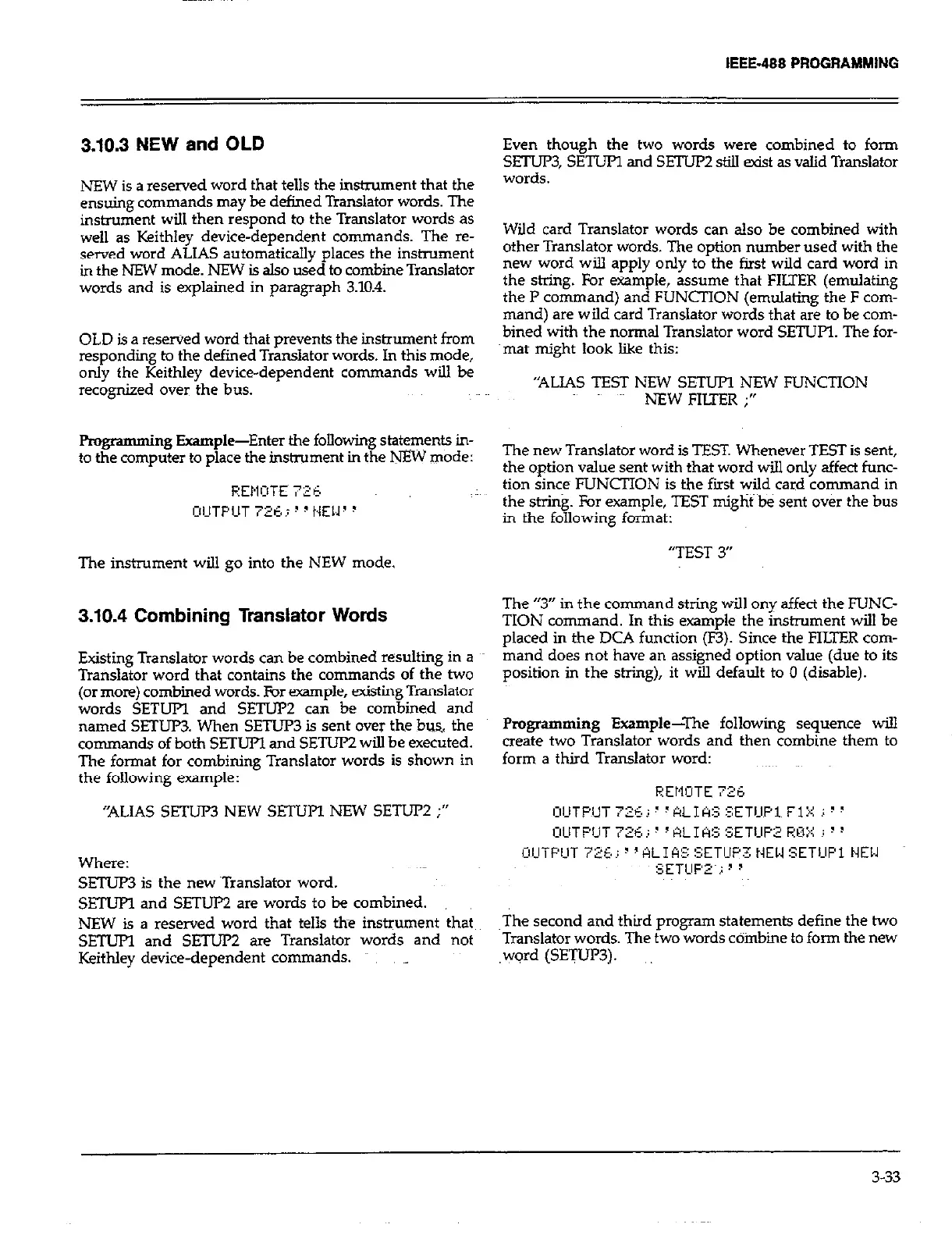IEEE-488 PROGRAMMING
3.10.3 NEW and OLD
NEW is a reserved word that tells the instrument that the
ensuing commands may be defined Translator words. The
instrument will then respond to the Translator words as
well as Keith@ device-dependent commands. The re-
served word ALIAS automatically places the inshument
in the NEW mode. NEW is also used to combine Translator
words and is explained in paragraph 3.10.4.
OLD is a reserved word that prevents the instrument from
responding to the defined Translator words. In this mode,
only the Keithley device-dependent commands will be
recognized over the bus.
Pmgmmming Example-Enter the following statements in-
to the computer to place the instrument in the NEW mode:
The instrument will go into the NEW mode.
3.10.4 Combining Translator Words
Existing Translator words can be combined resulting in a
Translator word that contains the commands of the two
(or more) combined words. For -pie, existing Translator
words SETIJl’l and SETUP2 can be combined and
named SETUP3. When SETUP3 is sent over the bus the
commands of both SETLJFI and SETUP2 will be executed.
The format for combining Translator words is shown in
the following example:
“ALIAS SETUP3 NEW SETUPI NEW SETUP2 ;”
Where:
SETUP3 is the new ~Translator word.
SETlJPl and SETUP2 are words to be combined.
NEW is a reserved word that tells the instrument that
SETUl? and SETUP2 are Translator words and not
Keithley device-dependent commands. ~I
Even though the two words were combined to form
SETlJl’3, SETUPI and SETLJF’2 still exist as valid Translator
words.
WiJd card Translator words can also be combined with
other Translator words. The option number used with the
new word will apply only to the fast wild card word in
the string. For example, assume that FIlXER (emulating
the P command) and FUNCTION (emulating the F com-
mand) are wild card Translator words that are to be com-
bined with the normal Translator word SETIJM. The for-
mat might look like this:
“ALIAS TEST NEW SETlJPl NEW FUNCTION
NEW FILTER ;”
The new Translator word is TEST. Whenever TEST is sent,
the option value sent with that word will only affect t&c-
tion since FUNCTION is the first wild card command in
the string. For example, TEST might be sent over the bus
in the following format:
“TEST 3”
The “3” in the command string will any affect the NNC-
TION command. In this example the instrument will be
placed in the DCA function (F3). Since the FILTER com-
mand does not have an assigned option value (due to its
position in the string), it will default to 0 (disable).
The second and third program statements define the two
Translator words. The two words cdinbine to form the new
,+qrd (SEvP3).
3-33
